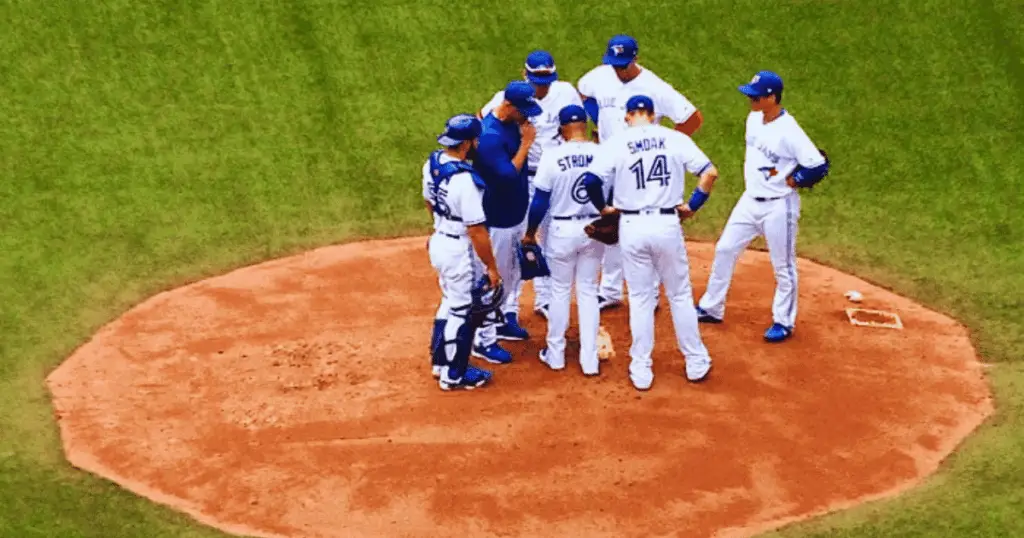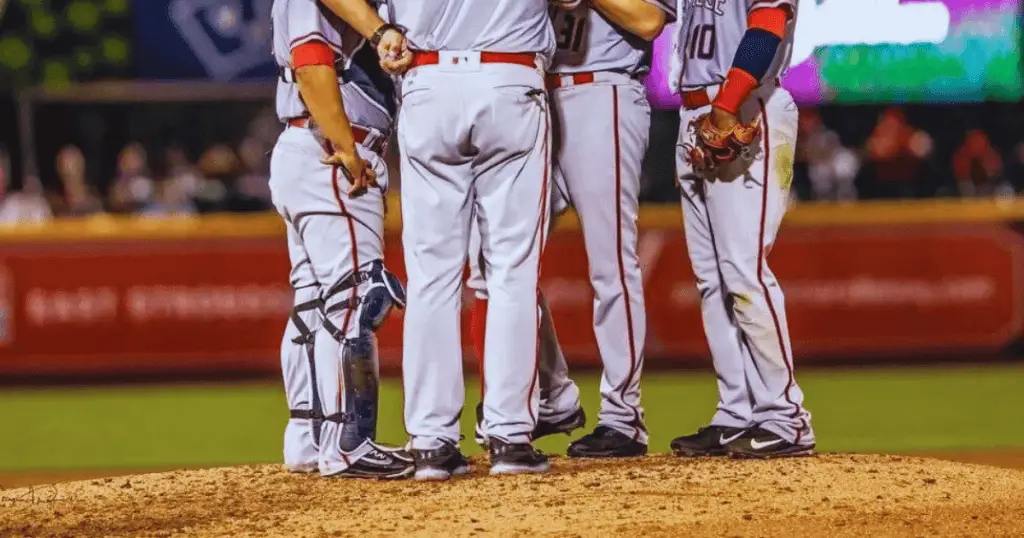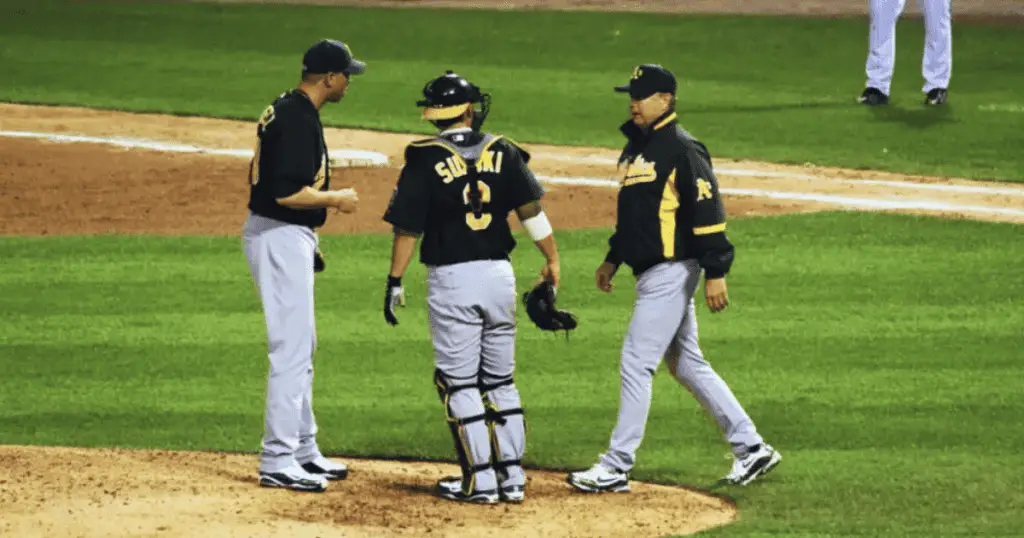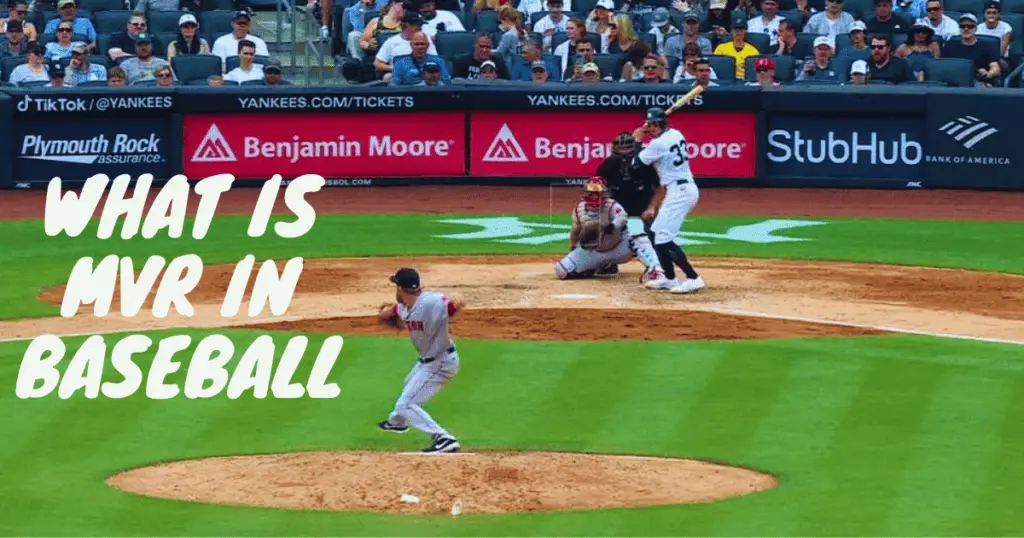Introduction

In addition to the traditional baseball statistics like runs, hits, and errors, some scorecards now include a new column labeled “MVR Baseball” But what does MVR stand for?
MVR stands for Mound Visits Remaining, a measure introduced by Major League Baseball in 2018 to regulate the number of visits each team can make to the pitcher’s mound during a game. As of the 2020 season, each team is allowed a maximum of five mound visits per game.
At first glance, this rule may appear straightforward. However, when considering the instances where additional personnel, besides the pitcher, visit the mound, there are certain exceptions and technicalities to be aware of within this regulation.
Understanding the Concept of MVR Baseball
In baseball, the concept of a mound visit holds significant importance within the rulebook. A mound visit is any instance where a coach or player, other than the pitcher, calls for a pause in the game to convene at the pitcher’s mound for a discussion.
These discussions serve various purposes, from calming a pitcher under pressure to resolving disagreements between pitcher and catcher on signs. Moreover, they occur when strategic insights need to be conveyed, such as when facing a new pinch hitter or addressing defensive positioning.
Occasionally, infielders may initiate mound visits to address mechanical issues with the pitcher or discuss strategic defensive maneuvers. Towards the end of a pitcher’s stint, the pitching coach may visit to calm nerves and provide additional time for a reliever to warm up in the bullpen.
Each team is allotted five mound visits per nine-inning game, as the home plate umpire signals to the press box. Exceeding this limit results in the automatic removal of the pitcher from the game.
Violations of the mound visit rule can lead to ejections and fines for coaches and players. However, exceptions exist within the rules, ensuring flexibility in certain circumstances.
Exceptions to the Mound Visit Rule in Baseball
Within the framework of mound visits, certain circumstances warrant exceptions to the rule, allowing visits to occur without penalty at the umpire’s discretion.
- Injury Concerns: If there’s reason to suspect the pitcher has sustained an injury, a mound visit may be permitted without penalty. This exception ensures that teams aren’t unfairly penalized in such situations.
- Crossed-Up Signals: Occasionally, miscommunication between the pitcher and catcher may occur, resulting in a crossed-up signal. This happens when the pitcher throws a different pitch than the catcher expected. Typically, the catcher’s body language reveals the misunderstanding. In this case, the umpire may allow a mound visit for the catcher and pitcher to rectify the miscommunication without penalty.

These exceptions, outlined under Rule 5.10(m), aim to maintain fairness and address legitimate concerns within the game without unduly restricting teams’ strategic options.
Furthermore, the back of the pitcher’s rubber features a scraper designed for players to clean mud off their spikes. Infielders can use this scraper without counting as a mound visit if they refrain from conversing with the pitcher.
Moreover, when the offensive team decides to send a pinch hitter to the plate, position players, often the catcher, may approach the mound before the at-bat commences. As long as no coach is involved, it will not be recorded as a mound visit.
What Is the Reason Behind Limiting Mound Visits?
You might wonder why mound visits need to be restricted and define what constitutes an official visit. Well, there’s a clear rationale behind it.
In response to concerns about the length of games, Major League Baseball (MLB) implemented measures to curtail mound visits starting in 2018. This initiative aimed to minimize interruptions caused by coaches or catchers frequently visiting the mound. It followed a previous rule change in 2016, which limited mound visits to 30 seconds.
Before 2016, the only restriction on mound visits was that a coach or manager had to remove a pitcher after visiting the mound for the second time in the same inning. However, in 2016, mound visits were further limited to 30 seconds.
Subsequently, in 2018, MLB reduced the number of allowable mound visits per team per game to six, then further to five the following season. As a result, scoreboards now prominently display the “MVR” column to indicate the remaining number of visits for each team during a game.

The introduction of MVR in baseball aimed to expedite the pace of play. Initial results seemed promising, with a significant reduction in total mound visits and a five-minute decrease in the average duration of a nine-inning game in 2018.
However, despite these efforts, game times rebounded in 2019 and continued to rise in the truncated 2020 season. Consequently, while the MVR rule may have yet to achieve MLB’s goal of shorter games, it has become a permanent fixture in the sport.
So, the next time you attend a baseball game and see “MVR” on the scoreboard, you’ll understand its significance in regulating mound visits and game flow.
Conclusion
In summary, the MVR (Mound Visits Remaining) rule was introduced in baseball to speed up games by limiting interruptions. While it initially showed promise in reducing game times, its impact has waned. Despite this, it remains a fixture in the sport, reflecting MLB’s ongoing efforts to balance tradition with modern demands. Ultimately, it serves as a reminder of baseball’s constant evolution and quest for improvement.
Also Read: Time Anderson New Worth
MVR baseball how many?
In a Major League Baseball game, both baseball teams can have five mound visits in a nine-inning game. Also, for every extra inning played, each team is also granted one additional inning.
LOB baseball?
Left on base can be interpreted as both an individual and team statistic in baseball. When considering an individual batter, it indicates the number of baserunners who remain stranded after that batter makes an out at the plate. Essentially, it reflects the batter’s inability to advance or score those runners, signifying a missed opportunity to contribute to the team’s offensive efforts.
OPS baseball?
On-base plus slugging (OPS) is a sabermetric baseball metric derived by adding a player’s on-base percentage and slugging percentage together. OPS evaluates a player’s proficiency in two critical offensive skills: getting on base and hitting for power. This combined metric offers a comprehensive assessment of a player’s overall offensive contribution to their team.
E baseball?
E: Errors. Total errors, or mistakes that should have resulted in an out, committed by each team.
How many mound visits are allowed in MLB?
five
Mound visits are limited to five per team per nine innings, with teams receiving an additional visit for every extra inning played.
- Best Catchers in MLB 2023 - April 3, 2024
- Best 2nd Basemen of All Time - March 15, 2024
- Kyle Schwarber Contract - March 11, 2024


